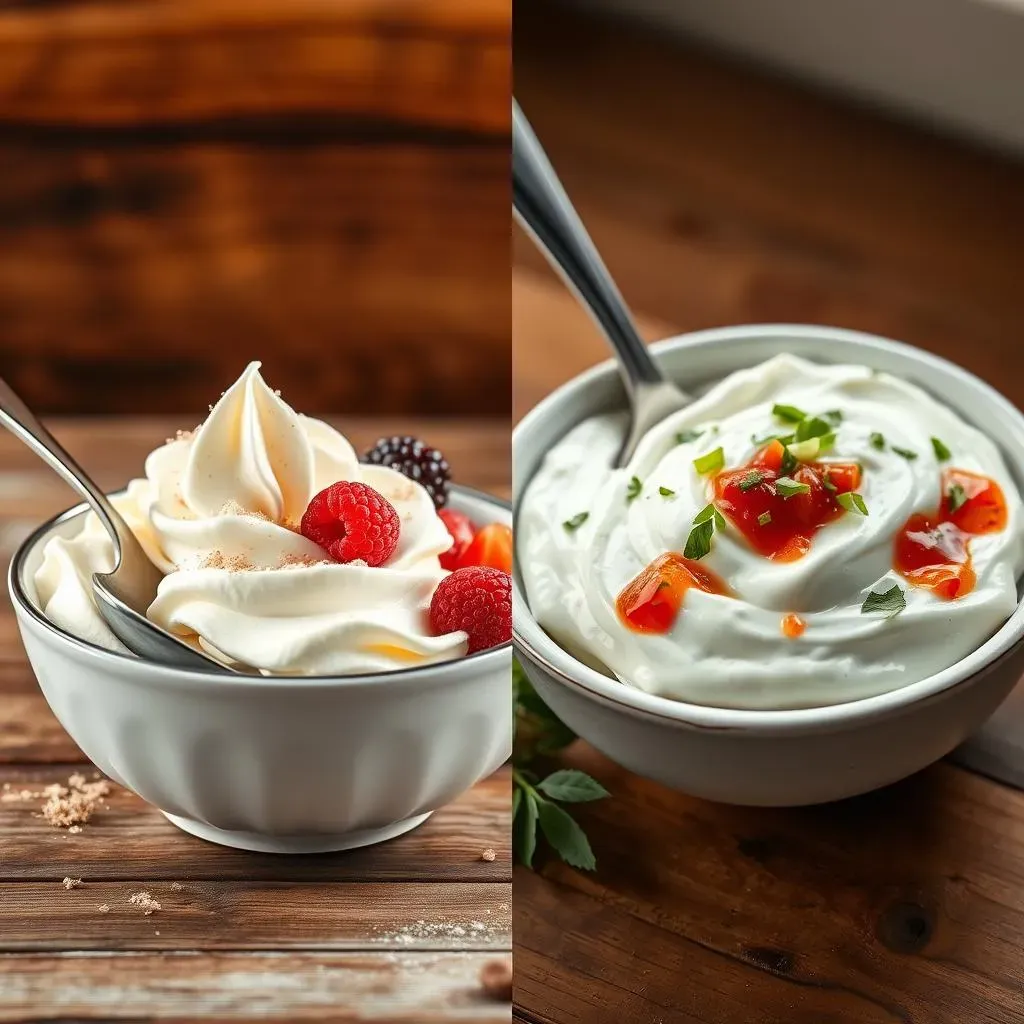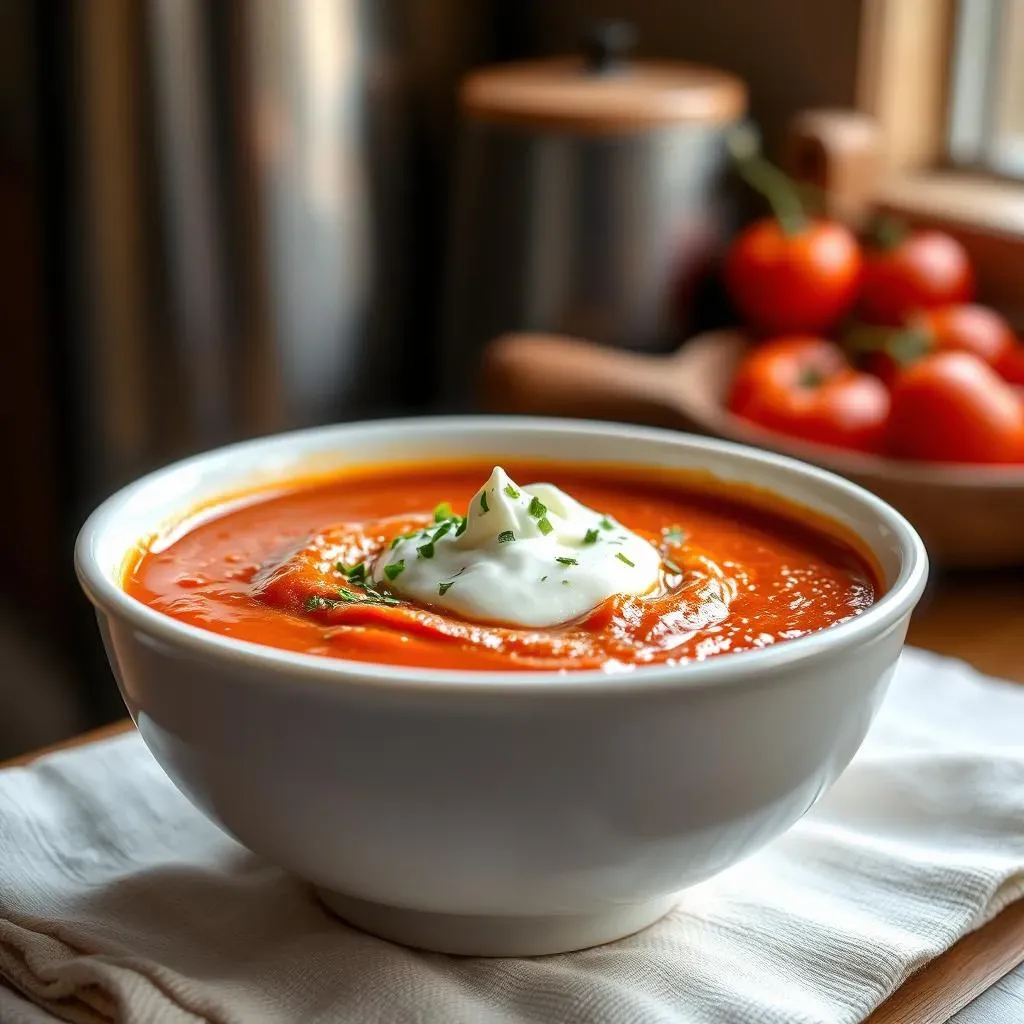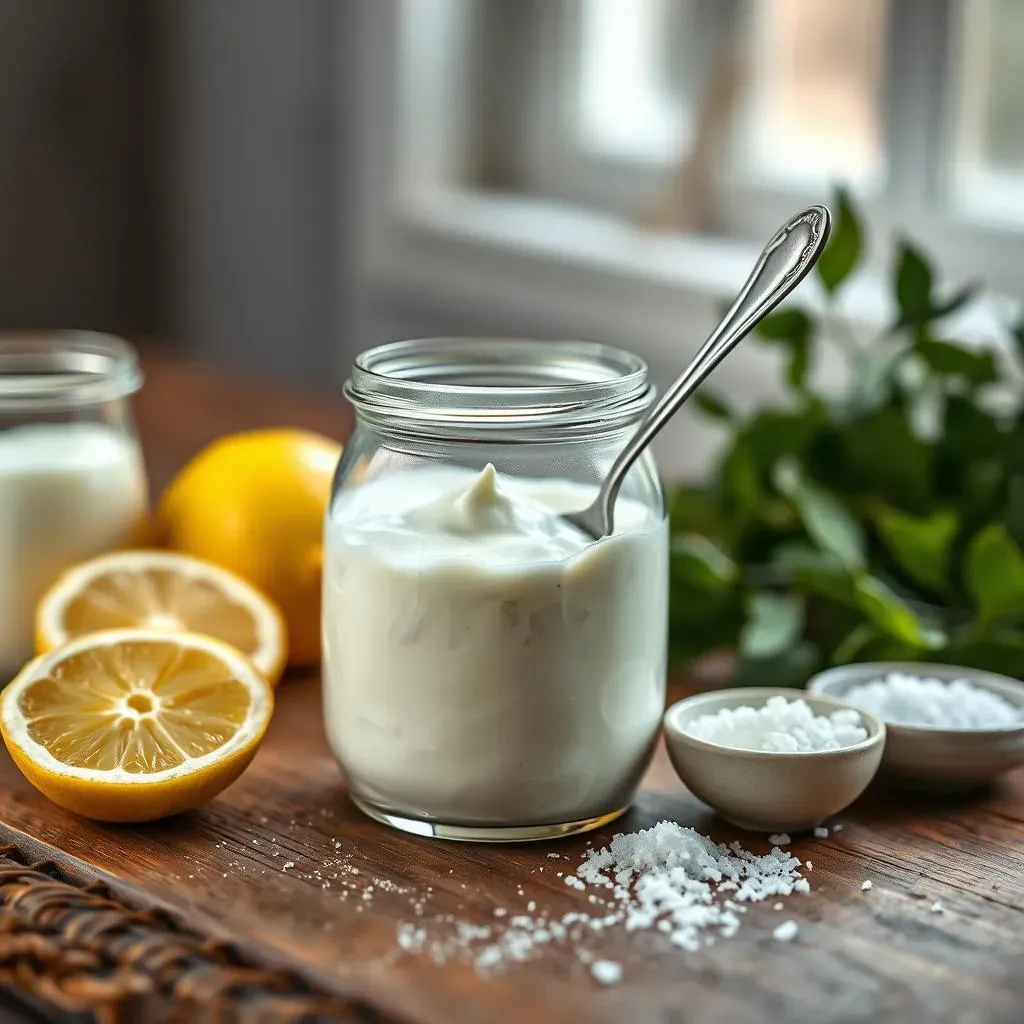Table of Contents
Ever stared blankly at a recipe, realizing you're missing a key ingredient – sour cream – and the only thing you have is heavy cream? The question burning in your mind: "Can you substitute heavy cream for sour cream?" This article explores that very creamy conundrum, guiding you through the intricacies of this common kitchen substitution. We'll unravel when this swap works like a charm, adding richness and texture to your dishes, and when it's best to avoid it altogether. We'll explore specific recipes where heavy cream shines as a sour cream substitute and others where it simply won't cut it. You'll learn how the unique properties of each ingredient affect the final product, whether it's a tangy dip, a creamy soup, or a decadent dessert. But that's not all! We'll even reveal a secret weapon: how to whip up your own homemade sour cream using heavy cream, giving you complete control over the flavor and texture. Get ready to become a culinary cream expert, armed with the knowledge to conquer any recipe, regardless of missing ingredients. So, let's dive into the delicious details and discover when you can – and can't – successfully substitute heavy cream for sour cream.
Can You Substitute Heavy Cream for Sour Cream? The Basics

Can You Substitute Heavy Cream for Sour Cream? The Basics
At first glance, heavy cream and sour cream might seem interchangeable, both boasting a creamy texture. However, their fundamental differences lie in fat content and taste. Heavy cream, with its higher fat percentage (around 36%), provides richness and a velvety mouthfeel. It's the star ingredient in whipped cream and decadent sauces. Sour cream, on the other hand, typically contains around 20% fat and boasts a distinct tangy flavor due to the fermentation process. This tang is what makes it a perfect topping for tacos or a key ingredient in certain dips and dressings.
Ingredient | Fat Content (approx.) | Flavor Profile |
|---|---|---|
Heavy Cream | 36% | Rich, buttery |
Sour Cream | 20% | Tangy, slightly acidic |
Therefore, a direct swap isn't always ideal. Using heavy cream in place of sour cream will result in a richer, less tangy outcome. Think of it like this: heavy cream is like a luxurious velvet robe, while sour cream is a crisp cotton shirt – both comfortable, but quite different in feel and purpose. The success of substituting heavy cream for sour cream hinges entirely on the recipe itself and the desired outcome. Sometimes, a little tweaking is all you need to achieve delicious results.
- Consider the recipe's flavor profile: Does it rely on the sour cream's tanginess?
- Think about the texture: Will the higher fat content of heavy cream alter the desired consistency?
- Experiment cautiously: Start with a small substitution to see how it affects the final product.
When Heavy Cream Works as a Sour Cream Substitute

When Heavy Cream Works as a Sour Cream Substitute
Creamy Soups and Sauces
Believe it or not, heavy cream can actually enhance certain creamy soups and sauces where the tang of sour cream isn't crucial. Think creamy tomato soup, a rich mushroom sauce, or a decadent potato soup. In these applications, the richness of the heavy cream adds a luxurious mouthfeel that complements the other flavors without the need for that signature sour cream tang. The heavier texture can even thicken the soup or sauce more effectively than sour cream.
The key here is to focus on recipes where the overall flavor profile is already rich and robust. The subtle sweetness of the heavy cream can actually balance the other flavors, creating a harmonious blend. Don't expect it to taste exactly like a recipe using sour cream, but you'll get a delicious, albeit different, result. Remember, it's all about adapting the recipe to the ingredient, not the other way around!
Recipe Type | Heavy Cream Benefit | Sour Cream Benefit (if used instead) |
|---|---|---|
Creamy Tomato Soup | Adds richness and thickness | Adds tanginess, possibly thinner consistency |
Mushroom Sauce | Creates a velvety texture | Adds a slight tang, could be less rich |
Potato Soup | Enhances creaminess | Adds tang, might be slightly less thick |
Baking Triumphs: Cakes and Frostings
Many baked goods, particularly rich cakes and frostings, can actually benefit from the higher fat content of heavy cream. In these instances, the cream's richness adds moisture and a decadent texture that enhances the overall experience. This is especially true for recipes that already incorporate a lot of sweetness; the heavy cream helps to balance that sweetness and prevent the cake from being overly dry or dense.
However, remember that the lack of tang will change the overall flavor profile. If your recipe calls for sour cream for a specific tangy note, then heavy cream won't replace that element. But if you're looking for a richer, moister cake or a smoother, more luxurious frosting, then heavy cream might be your new best friend. Just be sure to adjust the sugar accordingly, as the heavy cream will add a subtle sweetness.
- Cheesecakes: Heavy cream can provide a richer, denser texture.
- Pound cakes: Heavy cream adds moisture and prevents dryness.
- Frostings: Heavy cream creates a smoother, more luxurious consistency.
Whipped Cream Wonders
This one is a no-brainer. Heavy cream is the undisputed champion of whipped cream. Its high fat content allows it to whip up into light, airy clouds of deliciousness – something sour cream simply can't achieve. If your recipe calls for whipped cream as a topping or ingredient, then heavy cream is your go-to choice. No substitutions needed!
The lightness and fluffiness of whipped cream made from heavy cream are unparalleled. It's the perfect complement to desserts, fruit, or even savory dishes. While you can't use it to replace sour cream in most recipes, for whipped cream, heavy cream reigns supreme. It's the only choice that will give you that perfect texture and airy lightness.
"Heavy cream's ability to whip into a light and fluffy texture is what makes it so versatile in desserts. It's a game-changer!" - Anonymous Baking Enthusiast
When Heavy Cream Fails as a Sour Cream Substitute: Recipe Considerations

When Heavy Cream Fails as a Sour Cream Substitute: Recipe Considerations
Dishes Demanding Tang
Sour cream's defining characteristic is its tangy flavor, a result of the fermentation process. This tang is crucial in many recipes, providing a bright counterpoint to richer flavors or acting as a key component of the overall taste profile. Think of dishes like tacos, where the sour cream cuts through the richness of the meat and toppings. Or consider dips like French onion dip, where the tang is essential to the balance of flavors. Substituting heavy cream in these cases would result in a blander, less interesting dish, lacking the necessary acidity to make it sing.
Heavy cream, with its buttery richness, simply can't replicate that sharp, acidic bite. It will add creaminess, yes, but it will leave the recipe missing a crucial element. The result will often be a dish that’s oddly flat and underwhelming, a pale imitation of the intended flavor profile. So, for recipes that rely heavily on sour cream's tang, stick with the original ingredient. Don't risk ruining your culinary masterpiece!
Recipe | Why Heavy Cream Fails | Better Alternative |
|---|---|---|
Tacos | Lacks the necessary tang | Sour cream, plain yogurt |
French Onion Dip | Missing the crucial acidic element | Sour cream, crème fraîche |
Tzatziki Sauce | Won't provide the sharp, refreshing flavor | Sour cream, Greek yogurt |
Heat-Sensitive Situations
Sour cream's relatively low fat content and the fermentation process make it less likely to curdle when exposed to heat than heavy cream. Heavy cream, with its high fat content, is more prone to separating and curdling when heated, especially at high temperatures. This can lead to a grainy texture and an unpleasant appearance in your final dish. If a recipe requires cooking or simmering, heavy cream might not be the best choice.
Imagine adding heavy cream to a simmering chili or a hot soup. The heat could cause the cream to separate, resulting in unsightly clumps and a less-than-desirable texture. This isn't just an aesthetic problem; it can also affect the overall taste and mouthfeel of the dish. For hot dishes, it's safer to stick with sour cream or explore other alternatives like full-fat coconut milk, which handles heat much better.
- Soups and stews: Heavy cream may curdle at high temperatures.
- Chilis and sauces: Heat can cause separation and a grainy texture.
- Baked dishes with long cooking times: Heavy cream may separate and become oily.
Recipes Requiring Specific Texture
Sometimes, a recipe's success depends on the specific texture provided by sour cream. Its slightly thicker consistency contributes to the overall mouthfeel of many dishes, adding a pleasant creaminess without being overly heavy. Heavy cream, while creamy, is significantly richer and will alter the texture of the final product. This change can be detrimental, especially in recipes where the precise texture is critical.
For example, in certain dips or spreads, the slightly thinner consistency of sour cream allows for easier spreading and a smoother texture. Heavy cream, being much richer, could result in a thicker, less spreadable dip. Similarly, in some baked goods, the slightly thinner consistency of sour cream prevents the baked good from being overly dense. The higher fat content of heavy cream might make the finished product too rich and heavy.
"Don't underestimate the importance of texture in cooking. A small change can make a big difference!" - Chef Jean-Pierre Dubois (Fictional)
Making Homemade Sour Cream: A Heavy Cream Alternative

Making Homemade Sour Cream: A Heavy Cream Alternative
The Magic of Acid: Creating Tang from Cream
So, you're out of sour cream, but you have heavy cream? No problem! You can easily make your own sour cream at home using heavy cream as the base. The key is adding an acid to culture the cream, mimicking the process that creates sour cream's signature tang. This simple technique transforms rich, sweet heavy cream into a tangy, spoonable delight. You'll be amazed at how easy it is to control the final product’s tanginess!
The best part? You control the level of tanginess! Add more acid for a sharper flavor, or less for a milder taste. It's a customizable approach, allowing you to perfect the sour cream to your exact preferences. This homemade version provides a fantastic alternative to store-bought sour cream, especially when you need a specific level of tang or want to avoid preservatives.
Ingredient | Function |
|---|---|
Heavy Cream | Provides the creamy base |
Lemon Juice or White Vinegar | Adds acidity, cultures the cream |
Salt (optional) | Enhances the flavor |
A Simple Recipe for Homemade Sour Cream
Making homemade sour cream is surprisingly straightforward. Simply combine one cup of heavy cream with one to two tablespoons of lemon juice or white vinegar (adjust to your preferred level of tanginess). Give it a good whisk to combine the ingredients thoroughly. Then, cover the mixture and let it sit at room temperature for 12-24 hours, or even longer for a more intense tang. During this time, the acid will work its magic, transforming the heavy cream into a delightful sour cream.
After the waiting period, refrigerate the mixture for at least another four hours to allow it to fully thicken. Once chilled, your homemade sour cream will be ready to use. You can enjoy its creamy texture and bright tang in your favorite recipes. The process is simple, the results are rewarding, and you'll have complete control over the final product, avoiding any unwanted additives or preservatives. It's a win-win!
- Whisk together heavy cream and lemon juice/vinegar.
- Cover and let it sit at room temperature for 12-24 hours.
- Refrigerate for at least 4 hours to thicken.
Troubleshooting Your Homemade Sour Cream
While making homemade sour cream is generally easy, sometimes things don’t go exactly as planned. If your sour cream doesn't thicken enough, it might be due to using too little acid or not letting it sit long enough at room temperature. Try adding a bit more lemon juice or vinegar and letting it sit for a few more hours. If it's still too thin, you can try gently simmering the mixture, but be careful not to boil it, as this can curdle the cream.
On the other hand, if your sour cream is too thick or has separated, it could be due to using too much acid or letting it sit for too long. To remedy this, you can try whisking in a little bit of milk or cream to thin it out and re-integrate any separated portions. Remember, practice makes perfect. Don't be discouraged by a few initial attempts; with a little experimentation, you'll master the art of making delicious homemade sour cream.
"The beauty of homemade sour cream lies in its adaptability. Experiment and find what works best for your palate!" - Dairy Enthusiast